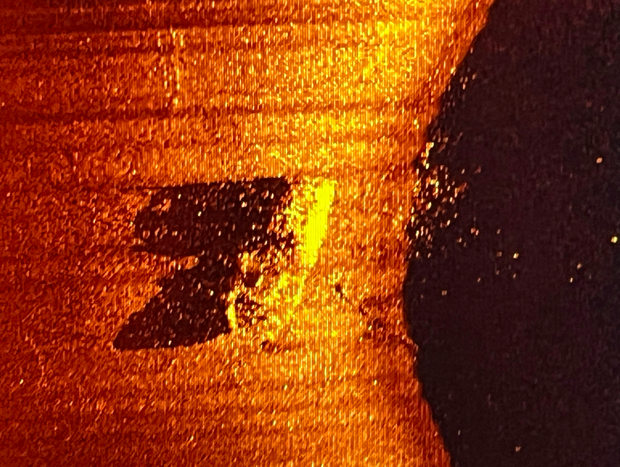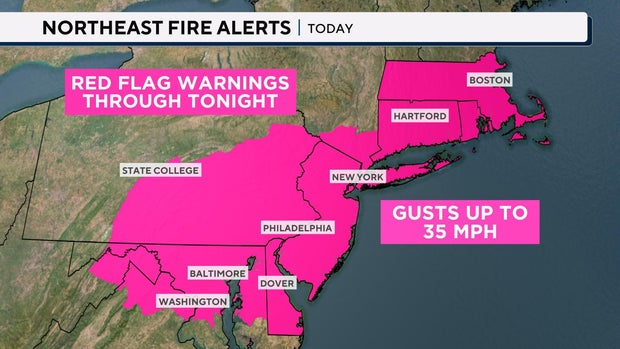CBS News
Wreck of ship on which famed explorer Ernest Shackleton died found on ocean floor off Canada

The wreck of the ship that famed explorer Ernest Shackleton died on more than a century ago has been found on the ocean floor off the coast of Canada, according to a news release from the Royal Canadian Geographical Society.
Shackleton was a legendary explorer who sailed to the edges of the Earth, including four trips to Antarctica. During one notable expedition in 1915, his iconic ship Endurance became trapped by sea ice. The ship sank, but Shackleton and his entire crew survived the episode. The Endurance shipwreck was finally found in 2022.
Seven years later, in 1922, Shackleton would die aboard the Quest, a Norwegian vessel, during another expedition to the polar region. Shackleton’s death of a heart attack at 47 ended what historians consider the “Heroic Age of Polar Exploration,” the RCGS said.
AP
After Shackleton’s death, the Quest was acquired by a Norwegian company and continued to sail important expeditions, including the 1930 British Arctic Air Route Expedition, the RCGS said. The ship was also used in Arctic rescues and even was part of the Royal Canadian Navy during World War II.
In 1962, while being used as a sealing ship, the Quest was damaged by ice off the coast of Newfoundland and sank. The crew survived, the RCGS said, but the ship landed on the seabed more than 1,200 feet underwater.
The wreck was found just a mile and a half away from the ship’s last reported position, but it took sonar equipment and an international team of experts to find the site, the RCGS said. The “Shackleton Quest Expedition” team included participants from Canada, Norway, the United Kingdom and the United States. Search director David Mearns said that he and lead researcher Antoine Normandin cross-referenced historic logs and maps with historical data to determine where currents and weather conditions may have carried the ship.
Royal Canadian Geographical Society
Just five days into the expedition, the site was found, with historians, divers and oceanographers working together to confirm the wreck’s identity.
“In the pantheon of polar ships, Quest is definitely an icon,” Mearns told BBC News
On Sunday, the wreck was confirmed to be that of the Quest, the RCGS said.
“Finding Quest is one of the final chapters in the extraordinary story of Sir Ernest Shackleton,” said expedition leader John Geiger, CEO of the RCGS, in the news release. “Shackleton was known for his courage and brilliance as a leader in crisis. The tragic irony is that his was the only death to take place on any of the ships under his direct command.”
The ship remains intact, Mearns said, and sonar imagery “corresponds exactly with the known dimensions and structural features of this special ship.”
Photo © Canadian Geographic
This year marks the 150th anniversary of Shackleton’s birth. His granddaughter, Alexandra Shackleton, was a patron of the expedition and said that finding the shipwreck during such a memorable anniversary has made its discovery all the more meaningful.
“My grandfather, Sir Ernest Shackleton, had purchased Quest with the intention of leading a Canadian Arctic expedition,” she said. “It is perhaps fitting that the ship should have ended its storied service in Canadian waters. I have long hoped for this day and am grateful to those who made this incredible discovery.”
CBS News
Iranian operative charged in pre-election scheme to assassinate Trump, other U.S. targets

An operative working for Iran’s Islamic Revolutionary Guard Corps told federal investigators that he was tasked in September with “surveilling, and, ultimately, assassinating” President-elect Donald Trump, according to court records unsealed Friday.
Prosecutors say Farhad Shakeri, who is believed to be residing in Iran, told investigators in a phone interview that unnamed IRGC officials pushed him to plan an attack against Mr. Trump last month. If the plan could not come together in time, the Iranian officials directed Shakeri to delay the plot until after the presidential election because the official “assessed that [Mr. Trump] would lose the election,” charging documents revealed.
Shakeri and two individuals living in the U.S. — Carlisle Rivera of Brooklyn, New York; and Jonathon Loadholt of Staten Island — were charged as part of a broad Iran-backed scheme to allegedly surveille and ultimately assassinate individuals inside the U.S. who opposed the Iranian regime.
FBI investigators wrote that Shakeri immigrated to the U.S. as a child from Iran, but was deported in 2008 after serving more than a decade in prison on robbery charges. They alleged the IRGC ultimately used Shakeri to recruit criminal contacts inside the U.S. to carry out specific operations like targeting an unnamed Iranian American journalist and activist living in New York.
In February, prosecutors alleged Shakeri paid Rivera and Loadholt about $1,000 to monitor the activist — who has spoken out against Iran’s regime — at an event at Fairfield University in Connecticut. The surveillance operations continued into March, according to court documents, when the pair allegedly traveled multiple times to the activist’s Brooklyn home. Text messages, security camera footage and cell site location data revealed their numerous trips.
“On or about April 1, 2024, 9 SHAKERI and RIVERA exchanged voice notes discussing RIVERA and LOADHOLT’ s efforts to locate and murder” the Iranian American, court records said.
“This b**** is hard to catch, bro,” Rivera allegedly said to Shakeri. “There ain’t gonna be no simple pull up, unless there[‘s] the luck of the draw.”
According to court records, Shakeri allegedly responded later, “you just gotta have patience and don’t, kicking, kick in the door is not an option because that’s a fail, that’s a fail maneuver. You gotta wait and have patience to catch her either going in the house or coming out, or following her out somewhere and taking care of it. Don’t think about going in. In is a suicide move.”
Investigators searched online accounts belonging to Rivera and Loadholt in the course of the federal probe and uncovered numerous images of firearms and other weapons.
In April, Shakeri agreed to pay Rivera and Loadholt $100,000 to “finish the work” and said he was tasked by the IRGC to hire individuals to assassinate the journalist. And by July, according to charging documents, the Iranians were growing impatient, instructing their U.S. assets to “take care of it already.”
The alleged plot to kill the activist did not succeed.
Rivera and Loadholt are not accused of being part of the plot to target Mr. Trump. They made their initial appearance in federal court on Thursday and were ordered detained, according to the Justice Department. Shakeri remains at large.
“We will not stand for the Iranian regime’s attempts to endanger the American people and America’s national security,” Attorney General Merrick Garland said in a statement.
The charges announced Friday are not the first brought against alleged operatives of the IRGC for plotting to kill Mr. Trump. Earlier this year, the FBI arrested Asif Merchant for planning to assassinate U.S. government officials, including potentially the president-elect. Merchant remains in custody and pleaded not guilty.
On at least five occasions between September and November, Shakeri participated in “voluntary telephonic interviews with FBI agents” in exchange for a sentence reduction for another individual serving time in the U.S, court records said.
During the interviews, he allegedly told the FBI of the IRGC’s desire to kill the Iranian American activist and target Israeli tourists in Sri Lanka with a mass shooting event. Shakeri also told investigators that the IRGC tasked him with surveilling two Jewish American citizens living in New York, but he did not provide the Iranian officials with information about the unnamed targets.
During the interview, Shakeri also allegedly told the FBI about the effort to target Mr. Trump.
In a statement, FBI Director Christopher Wray said, “The Islamic Revolutionary Guard Corps — a designated foreign terrorist organization — has been conspiring with criminals and hitmen to target and gun down Americans on U.S. soil and that simply won’t be tolerated.”
The charges and allegations announced Friday are part of broader posture by U.S. intelligence and law enforcement to publicly bring attention to Iran’s alleged efforts to quiet dissidents on U.S. soil and target U.S. government figures after the killing of IRGC General Qasem Soleimani by American forces in 2020. Mr. Trump and former members of his administration have been forced in recent years to increase his security due to the threats.
The Justice Department has charged numerous other defendants in recent years with acting on behalf of Iran by targeting outspoken dissidents living in the U.S.
Attorneys for Rivera and Loadholt were not immediately identified.
CBS News
Maps show drought and fire conditions in Northeast states

The Northeastern U.S. is experiencing ongoing drought conditions, which is helping to fuel an uptick in fire danger. For Friday, an elevated fire weather outlook was issued by the National Weather Service’s Storm Prediction Center for the area stretching from Massachusetts to the northern edge of Virginia and West Virginia.
CBS News
The threat with this elevated fire risk is due to winds picking up to 10-15 mph, with wind gusts upwards of 25-35 mph. Relative humidity levels are as low as 20% in some spots, as well. Red flag warnings have been issued into the evening hours of Friday across parts of the Northeast and New England.
CBS News
The weekly drought monitor came in on Thursday, and 57% of the Tri-State area of metro New York, New Jersey and Connecticut is under a moderate drought. Brushfires flared up along the New Jersey Palisades overnight while firefighters fought other blazes in southern New Jersey, and multiple wildfires have been burning in Massachusetts, where drought conditions range from moderate to severe.
CBS News
Here’s more on the conditions states in the region are facing:
For Massachusetts, 84% of the state is in MODERATE drought while 32% is in SEVERE drought. Boston received its last measurable rainfall on Oct. 30 of 0.18 inches. Boston’s average annual rainfall accumulation is 36.46 inches and the city has received 36.38 so far this year.
For Connecticut, 100% of the state is now in MODERATE drought, up from only 14% of the state at that level just last week. New Haven saw its last measurable rainfall back on Oct. 7 of 0.27 inches. (Technically it received 0.01 inches on Nov. 1 but that was not very significant.) Hartford, which receives an average of 40.25 inches of rainfall annually, has gotten 39.29 so far this year.
For New York, 85% of the state is ABNORMALLY DRY while 26% of the state is now in a MODERATE drought. New York City’s Central Park received its last measurable rainfall back on Sept. 29, with 0.78 inches. (Technically it got 0.01 inches on Oct. 29 but that was not significant either.) Central Park normally averages 42.38 inches of annual rainfall and has received 38.49 inches so far this year.
For New Jersey, 76% of the state is now under a SEVERE drought and it has worsened into an EXTREME drought in almost 20% of the southeastern section of the state. Newark Liberty International Airport had its last measurable rainfall on Sept. 29 of 0.39 inches. Newark receives on average 39.88 inches of rain annually and has received 34.82 so far this year.
For Pennsylvania, 22% of the state is now under a SEVERE drought with 4% in EXTREME drought. Philadelphia had its last measurable rainfall back on Sept. 29 of 0.11 inches. Philadelphia receives on average annual rainfall of 37.89 inches and has received 33.43 so far this year.
For Maryland, 53% of the state is now under a SEVERE drought with 4% in EXTREME drought. Baltimore saw its last measurable rainfall back on Oct. 1, with 0.35 inches. Baltimore averages 38.94 inches of rainfall annually and has only received 31.71 inches so far this year.
The dry conditions are not expected to last much longer in the Northeast, as the next chance of rain can come as early as Sunday night.
CBS News
When can a credit card company sue you for non-payment?

Getty Images
Credit cards can be a convenient way to manage expenses, but they also come with a serious responsibility to repay the borrowed funds on time. When a credit card account goes unpaid, it can result in late fees, penalty interest rates and damaged credit scores — and in certain cases, non-payment can lead to even more severe repercussions, like being sued for your unpaid debt. A lawsuit over unpaid credit card debt may sound extreme, but it’s a real possibility if your debts are left unaddressed.
The good news is that creditors don’t initiate lawsuits lightly — they typically attempt to work with the borrower first. But when these attempts fail and a credit card account remains delinquent, a lawsuit can be an option for creditors to pursue. Knowing when this step is likely to happen can help you take proactive measures to avoid such a scenario.
So when exactly can a credit card company sue you for non-payment? And what are the ways to resolve credit card debt without facing a lawsuit? Below, we’ll explain what you should know about when a credit card company can take legal action over unpaid debt and what strategies you can use to manage and reduce your debt load effectively.
Get rid of your delinquent credit card debt now.
When can a credit card company sue you for non-payment?
In general, a credit card company can sue you for non-payment once your account becomes severely delinquent, typically after 90 to 180 days of missed payments. When you initially miss a payment, the company will notify you and your account begins accruing late fees and possibly a higher penalty interest rate. As missed payments accumulate, the creditor’s collection efforts intensify. This can involve more frequent phone calls, letters and possibly offers to set up a payment plan.
If you’re unable to make a payment during this initial period, the account will likely be “charged off” or written off as a loss by the credit card company after 180 days of delinquency. At this stage, it’s common for the credit card company to sell the debt to a collection agency at a discounted rate — typically pennies on the dollar. At that point, the collection agency typically owns your debt.
Once a collection agency takes over your account, they have the right to pursue the debt on their own behalf. Collection agencies may contact you through calls, letters or other forms of communication to collect the balance. However, if the debt remains unpaid even after collection efforts, the collection agency may file a lawsuit. The decision to sue depends on several factors, including the amount owed, the collection agency’s policies and whether they believe legal action will yield repayment.
Receiving a lawsuit summons is typically the final warning that your debt has reached a critical stage. If the court rules in favor of the credit card company or collection agency, they may be granted a judgment that allows for methods like wage garnishment or property liens to recover the owed amount. Remember, though, that each state has a statute of limitations on debt, which is typically between three and 10 years. After that point, the creditor may no longer sue, although they can still attempt to collect it through non-legal means.
Find out how to lower your credit card debts today.
How to avoid a lawsuit over unpaid credit card debt
If you’re struggling with credit card debt, there are strategies available to avoid a lawsuit, including:
Contact your credit card company
When financial hardship makes it difficult to meet payments, one option is to contact your credit card company, as they may have hardship programs or alternative payment plans that can help. These programs can reduce interest rates, waive late fees or extend payment deadlines temporarily and addressing the issue early can prevent the account from escalating to collections or legal action.
Use debt relief to tackle what you owe
The following debt relief strategies could also be worth considering to avoid a lawsuit over unpaid credit card debt:
- Debt management: With a debt management plan, a credit counseling agency negotiates with your creditors to create a single, affordable monthly payment, often with reduced interest rates and fees.
- Debt settlement: With debt settlement (also known as debt forgiveness), the goal is to negotiate a lump-sum payment that’s less than the total owed, reducing your debt obligation.
- Debt consolidation loans: A debt consolidation loan through a bank or traditional lender may also be an option. This type of loan combines multiple credit card balances into a single loan, ideally with a lower interest rate, making monthly payments more manageable.
- Debt consolidation programs: When you enroll in a debt consolidation program, you work with a debt relief company to secure a debt consolidation loan through a third-party lender, allowing you to make one monthly payment at a lower rate.
The bottom line
Facing a lawsuit over unpaid credit card debt can be intimidating, but understanding when legal action is likely to happen can help you take control of your financial situation before it reaches that point. Early intervention, such as contacting your creditor or pursuing debt relief, can prevent your debt from escalating and help you manage repayment in a way that suits your financial needs. After all, taking the time to address unpaid credit card debt now can relieve stress and safeguard your financial future.















